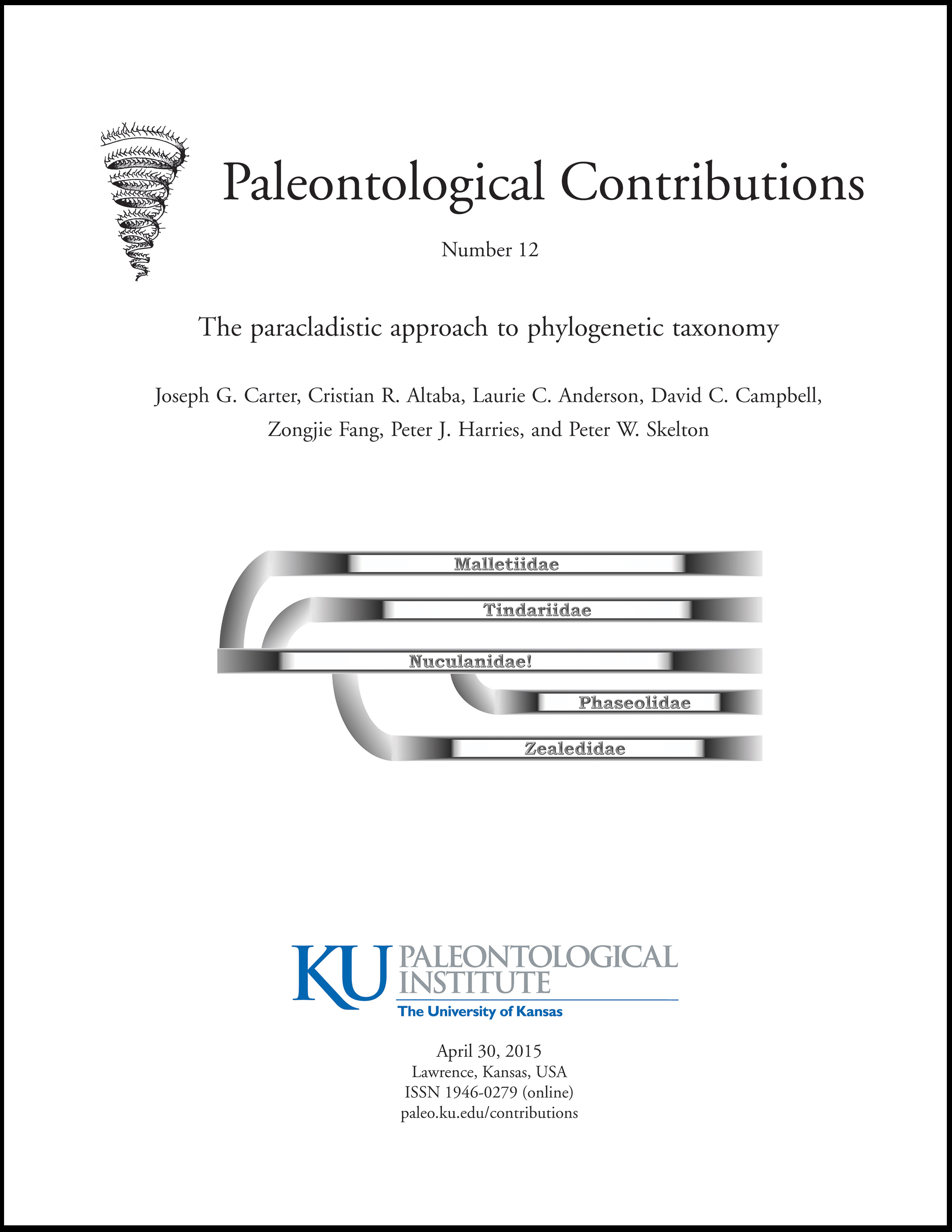The paracladistic approach to phylogenetic taxonomy
DOI:
https://doi.org/10.17161/PC.1808.17551Abstract
The inclusion of some paraphyletic groups in a temporally and taxonomically comprehensive phylogenetic classification is inevitable because cladistic methodology is incapable of excluding the possibility that a structurally (i.e., based on the branching pattern of a given cladogram) monophyletic group contains the ancestor of another group, i.e., that it is historically paraphyletic. Paracladistics is proposed as a pragmatic synthesis of phylogenetic and evolutionary taxonomy in which true monophyly is distinguished from structural monophyly with historical paraphyly, some structurally paraphyletic groups are retained in the interest of nomenclatorial continuity and stability, and both unranked and suprageneric ranked taxon names are defined phylogenetically. Ancestral groups are structurally paraphyletic or structurally monophyletic but historically paraphyletic sets of species that are believed to contain the ancestor for the most recent common ancestor of a descendent group. Historical paraphyly is determined by considering evidence of nesting in cladistic analyses, timing of first appearances in the fossil record, polarity in character evolution, and taxa that are morphologically intermediate between groups of species. The decision to name an ancestral group is based on the same criteria as the decision to name a clade. Ancestral groups are defined in the same manner as clades, except that their descendent group(s) are designated as external specifiers. Recognizing that two supposedly monophyletic, cladistically defined sister taxa can represent ancestral and descendent groups has implications for inferring their times of origination. To illustrate the advantages of the paracladistic approach to phylogenetic taxonomy, alternative paracladistic and phylogenetic classifications of the crown group families of Nuculanoidea (Mollusca, Bivalvia) are presented.
Downloads
Published
Issue
Section
License
Copyright (c) 2015 Joseph G. Carter, Cristian R. Altaba, Laurie C. Anderson, David C. Campbell, Zongjie Fang, Peter J. Harries, Peter W. Skelton

This work is licensed under a Creative Commons Attribution 4.0 International License.
- Authors retain copyright and the works are licensed under a Creative Commons Attribution 4.0 License that allows others to share the work with an acknowledgement of the work's authorship and initial publication in this journal.
- Authors are permitted and encouraged to post their work online (e.g., in institutional repositories or on their website) prior to and during the submission process, as it can lead to productive exchanges, as well as earlier and greater citation of published work (See The Effect of Open Access)


